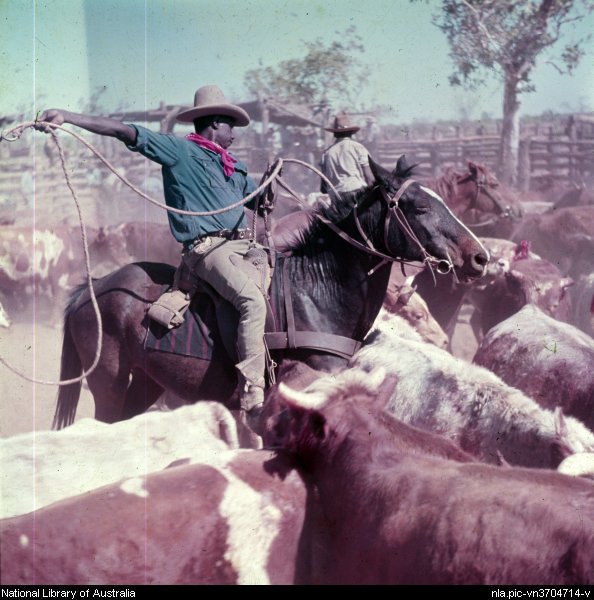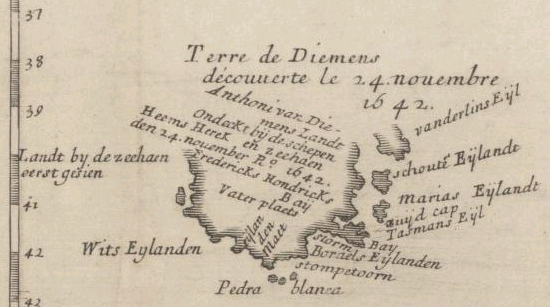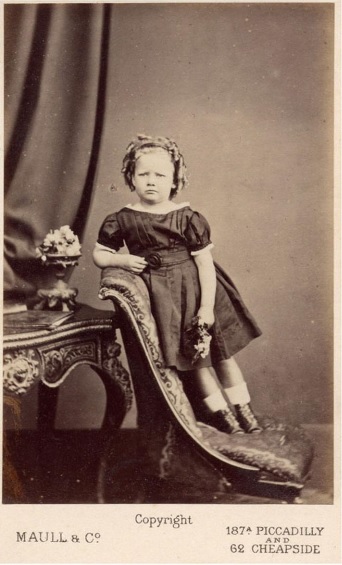|
Johnsonville, Victoria
Johnsonville is a town in the East Gippsland region of Victoria (Australia), Victoria, Australia. It is located on the Princes Highway 18.9 km east from the city of Bairnsdale and 18.3 km west from the tourist resort and fishing port of Lakes Entrance. The town encompasses an area of approximately 5,617 hectares, 56 square kilometres or 13,879 acres. Johnsonville forms one of the 224 cities, towns, villages and localities included within the scope of the East Gippsland Shire directive. The local member for the East Gippsland Region is Tim Bull. At the 2016 Australian census, 2016 census, Johnsonville had a population of 327. History The original inhabitants of the land were the Indigenous Australians, in particular the Gunai people who inhabited the region as far east as the Snowy River. The township got its name from John Johnson, a man of Scandinavian origins, who purchased the nearby Swan Reach, Victoria, Swan Reach run in 1857 which also encompassed Johnsonvill ... [...More Info...] [...Related Items...] OR: [Wikipedia] [Google] [Baidu] |
Melbourne
Melbourne ( ; Boonwurrung/Woiwurrung: ''Narrm'' or ''Naarm'') is the capital and most populous city of the Australian state of Victoria, and the second-most populous city in both Australia and Oceania. Its name generally refers to a metropolitan area known as Greater Melbourne, comprising an urban agglomeration of 31 local municipalities, although the name is also used specifically for the local municipality of City of Melbourne based around its central business area. The metropolis occupies much of the northern and eastern coastlines of Port Phillip Bay and spreads into the Mornington Peninsula, part of West Gippsland, as well as the hinterlands towards the Yarra Valley, the Dandenong and Macedon Ranges. It has a population over 5 million (19% of the population of Australia, as per 2021 census), mostly residing to the east side of the city centre, and its inhabitants are commonly referred to as "Melburnians". The area of Melbourne has been home to Aboriginal ... [...More Info...] [...Related Items...] OR: [Wikipedia] [Google] [Baidu] |
Indigenous Australians
Indigenous Australians or Australian First Nations are people with familial heritage from, and membership in, the ethnic groups that lived in Australia before British colonisation. They consist of two distinct groups: the Aboriginal peoples of the Australian mainland and Tasmania, and the Torres Strait Islander peoples from the seas between Queensland and Papua New Guinea. The term Aboriginal and Torres Strait Islander peoples or the person's specific cultural group, is often preferred, though the terms First Nations of Australia, First Peoples of Australia and First Australians are also increasingly common; 812,728 people self-identified as being of Aboriginal and/or Torres Strait Islander origin in the 2021 Australian Census, representing 3.2% of the total population of Australia. Of these indigenous Australians, 91.4% identified as Aboriginal; 4.2% identified as Torres Strait Islander; while 4.4% identified with both groups. [...More Info...] [...Related Items...] OR: [Wikipedia] [Google] [Baidu] |
Selection (Australian History)
Selection is the act of choosing and acquiring a subdivided tract of land for farming purposes in Australia. A selection is also descriptive of the plot of land that was selected. The term derived from "free selection before survey" of crown land in some Australian colonies under land legislation introduced in the 1860s. These acts were intended to encourage closer settlement, based on intensive agriculture, such as wheat-growing, rather than extensive agriculture, such as wool production. Selectors often came into conflict with squatters, who already occupied the land and often managed to circumvent the law. New South Wales The Robertson Land Acts allowed those with limited means to acquire land. With the stated intention of encouraging closer settlement and fairer allocation of land by allowing 'free selection before survey', the Land Acts legislation was passed in 1861. The relevant acts were named the ''Crown Lands Alienation Act'' and ''Crown Lands Occupation Act''. The a ... [...More Info...] [...Related Items...] OR: [Wikipedia] [Google] [Baidu] |
Settlers
A settler is a person who has migrated to an area and established a permanent residence there, often to colonize the area. A settler who migrates to an area previously uninhabited or sparsely inhabited may be described as a pioneer. Settlers are generally from a sedentary culture, as opposed to nomadic peoples who may move settlements seasonally, within traditional territories. Settlement sometimes relies on dispossession of already established populations within the contested area, and can be a very violent process. Sometimes settlers are backed by governments or large countries. Settlements can prevent native people from continuing their work. Historical usage One can witness how settlers very often occupied land previously residents to long-established peoples, designated as Indigenous (also called "natives", "Aborigines" or, in the Americas, "Indians"). The process by which Indigenous territories are settled by foreign peoples is usually called settler colonialism ... [...More Info...] [...Related Items...] OR: [Wikipedia] [Google] [Baidu] |
Drover (Australian)
A drover in Australia is a person, typically an experienced stockman, who moves livestock, usually sheep, cattle, and horses "on the hoof" over long distances. Reasons for droving may include: delivering animals to a new owner's property, taking animals to market, or moving animals during a drought in search of better feed and/or water or in search of a yard to work on the livestock. The drovers who covered very long distances to open up new country were known as " overlanders". Method Moving a small mob of quiet cattle is relatively easy, but moving several hundreds or thousands head of wild station cattle over long distances is a very different matter. Long-distance moving large mobs of stock was traditionally carried out by contract drovers. A drover had to be independent and tough, an excellent horseman, able to manage stock as well as men. The boss drover who had a plant (horses, dogs, cooking gear and other requisites) contracted to move the mob at a predetermined rat ... [...More Info...] [...Related Items...] OR: [Wikipedia] [Google] [Baidu] |
Van Diemen's Land
Van Diemen's Land was the colonial name of the island of Tasmania used by the British during the European exploration of Australia in the 19th century. A British settlement was established in Van Diemen's Land in 1803 before it became a separate colony in 1825. Its penal colonies became notorious destinations for the transportation of convicts due to the harsh environment, isolation and reputation for being inescapable. Macquarie Harbour and Port Arthur are among the most well-known penal settlements on the island. With the passing of the Australian Constitutions Act 1850, Van Diemen's Land (along with New South Wales, Queensland, South Australia, Victoria, and Western Australia) was granted responsible self-government with its own elected representative and parliament. On 1 January 1856, the colony of Van Diemen's Land was officially changed to Tasmania. The last penal settlement was closed in Tasmania in 1877. Toponym The island was named in honour of Anthony van Die ... [...More Info...] [...Related Items...] OR: [Wikipedia] [Google] [Baidu] |
Arthur Orton
Arthur Orton (20 March 1834 – 1 April 1898) was an English man who has generally been identified by legal historians and commentators as the "Tichborne Claimant", who in two celebrated court cases both fascinated and shocked Victorian society in the 1860s and 1870s. The son of a London butcher, Orton went to sea as a boy, spent a year in Chile, and worked as a butcher and stockman for squatters in Australia in the middle-to-late 1850s. In 1866 Thomas Castro, a butcher from Wagga Wagga in Australia, claimed to be Roger Tichborne, the heir to the Tichborne estates and baronetcy who had been declared lost at sea in 1854. During the protracted court proceedings that followed Castro's claim, evidence was produced that Castro might in fact be Arthur Orton, attempting to secure the Tichborne fortunes by imposture. The verdict of the jury in ''Regina versus Castro'' (1873–74) was that Castro was not Roger Tichborne, and that he was Arthur Orton. He was sentenced to fourteen ... [...More Info...] [...Related Items...] OR: [Wikipedia] [Google] [Baidu] |
Tichborne Case
The Tichborne case was a legal ''cause célèbre'' that captivated Victorian England in the 1860s and 1870s. It concerned the claims by a man sometimes referred to as Thomas Castro or as Arthur Orton, but usually termed "the Claimant", to be the missing heir to the Tichborne baronetcy. He failed to convince the courts, was convicted of perjury and served a long prison sentence. Roger Tichborne, heir to the family's title and fortunes, was presumed to have died in a shipwreck in 1854 at age 25. His mother clung to a belief that he might have survived, and after hearing rumours that he had made his way to Australia, she advertised extensively in Australian newspapers, offering a reward for information. In 1866, a Wagga Wagga butcher known as Thomas Castro came forward claiming to be Roger Tichborne. Although his manners and bearing were unrefined, he gathered support and travelled to England. He was instantly accepted by Lady Tichborne as her son, although other family memb ... [...More Info...] [...Related Items...] OR: [Wikipedia] [Google] [Baidu] |
Maffra
Maffra is a town in Victoria, Australia, east of Melbourne. It is in the Shire of Wellington local government area and it is the second most populous city of the Shire. It relies mainly on dairy farming and other agriculture, and is the site of one of Murray-Goulburn Cooperative's eight processing plants in Victoria. Maffra is a detour off the Princes Highway and is near Sale, Stratford, Newry, Tinamba, Heyfield and Rosedale. At the 2016 census, Maffra had a population of 4,316. History The town began as an outstation of the region's first cattle run, Boisdale, named by pioneer grazier Lachlan Macalister after a village on the island of South Uist in the Outer Hebrides, Scotland. The town appears to have taken its name from a group of squatters from Maffra, a village in the Monaro region of NSW, with its location between current Maffra and Newry being written on an early map. The squatters moved on, but the name remained. The Monaro Maffra was probably connected t ... [...More Info...] [...Related Items...] OR: [Wikipedia] [Google] [Baidu] |
Public Figure
A public figure is a person who has achieved notoriety, prominence or fame within a society, whether through achievement, luck, action, or in some cases through no purposeful action of their own, In the context of defamation actions (libel and slander) as well as invasion of privacy, a public figure cannot succeed in a lawsuit on incorrect harmful statements in the United States unless there is proof that the writer or publisher acted with actual malice by knowing the falsity or by reckless disregard for the truth. The legal burden of proof in defamation actions is thus higher in the case of a public figure than in the case of an ordinary person. Libel laws vary considerably on this matter from jurisdiction to jurisdiction. Even within a cultural grouping, the libel laws of the UK are quite different from those in the US, for example. United States The controlling precedent in the United States was set in 1964 by the United States Supreme Court in ''New York Times Co. v. Sulliv ... [...More Info...] [...Related Items...] OR: [Wikipedia] [Google] [Baidu] |
Swan Reach, Victoria
Swan Reach is a small residential town located in the east Gippsland region of Victoria. It is situated east of the state capital, Melbourne and is located approximately halfway between the townships of Bairnsdale and Lakes Entrance on the Tambo River. Swan Reach falls under the jurisdiction of the Shire of East Gippsland local government area. According to the 2016 Australian Census Swan Reach and the surrounding area had a population of 751 people. The region did not have much population until the establishment of sawmills on the Tambo River between 1864 and 1870. With the influx of settlers, farming, dairy and cheese factory came into being. In 1875, the Tambo school was established and later hotels and shops were set up in the area. Swan Reach Post Office opened on 1 February 1880. It was known from around 1906 to around 1911 as Swan Reach West in anticipation of a surveyed Swan Reach township to the east being established. Nearly everyone currently residing in Swan Reach ... [...More Info...] [...Related Items...] OR: [Wikipedia] [Google] [Baidu] |






